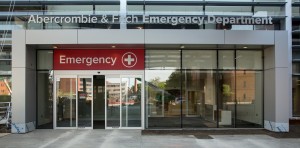The emergency room in any hospital can be a saving grace to many of its visitors, treating patients for anything ranging from mild to moderate pain all the way up to acute bodily trauma. Gone are the days where we call the emergency room as such. It is now more appropriately referred to as an emergency department because, as most emergency department personnel so aptly point out, it is not just merely one room but a department comprised of many individual rooms consisting of a multitude specialized doctors working in unison. The doctors servicing emergency departments have grown from just emergency medicine physicians to include general internists, critical care surgeons, and many other specialists that serve to combat even the most peculiar ailments.
Although the emergency department is such a positive entity, it is not immune to its own pitfalls and negative forces. Emergency departments have to deal with sometimes incredible overcrowding which often results in equally as incredible wait times. An emergency department also has the double-edged sword element of not being able to turn anyone away for any reason. A physician examines every patient that visits an emergency department regardless of the reason for the visit. Additionally, patients cannot be turned away for care whether the patient is able to pay his or her medical bills.
Perhaps the most critical aspect plaguing any emergency department is that of habitual visitors or “frequent flyers.” A frequent flyer, in terms of an emergency department, is a patient characterized as someone who habitually seeks treatment at an emergency department. One study conducted by the South Carolina Public Health Institute characterizes a frequent user as a patient who visits the emergency department at least five times in one calendar year in that state. The same study goes on to define a frequent user as a person of modest means and poor health, who goes in and out of emergency departments day after day.
In another study, conducted by the Washington State Department of Social & Health Services, examines Alcohol and Drug abusers and patients who have a mental illness that frequent emergency departments. This study shows a higher incidence of visits among those patients that are categorized into these two segments who can be appropriately defined as substance abusers and those who suffer from some sort of mental illness.
Of all patients involved in this study that were considered frequent emergency department visitors, only 15% of them exhibited no indication of a mental illness or signs of drug and/or alcohol abuse. In Contrast, of patients that visited emergency departments in Snohomish County, Washington 21 times or more in the 2002 fiscal year, 55% of them had both a mental illness, as well as substance abuse issues.
In strict regards to substance abusers, some of the problem of frequent users, and in turn overcrowding, can be attributed to patients that are seeking prescription substances that he or she may consume. Most prevalent among these seekers are opiate-based pain management medications such as Oxycodone, Vicodin, Percocet, and the like.
Snohomish County, Washington emergency departments wrote, on average, 39 prescriptions for narcotics per patient that visited 21 times or more in the fiscal year 2002. This translates into a supply of narcotics for one patient that lasts about 295 days.
There is problem among these chronic emergency department visitors. To remedy this problem is to address the specific ailment the patient is complaining about, but to go beyond that one visit and to see the pattern. These patients are going to the emergency department in an effort to attain drugs. To combat this, one solution would be to address the patient for substance abuse, which is out of the scope of many emergency department’s scope.
The Washington State Department of Social & Health Services conducted a study of patients that are receiving Social Security Supplemental Income (SSI) that enter chemical dependency treatment. This study shows that of the patients that enter but do not complete a treatment program, frequent visits are reduced by 17%. Patients that do complete a substance abuse treatment program are even further reduced by 48%.
The problem of frequent users of an emergency department could be rectified. These patients seem to be slipping in between the cracks though. The patients go to emergency departments because they know they will most likely be able to obtain narcotics, but the physicians are there to treat the patients chief complaint, not long term issues like that of substance abuse. Furthermore the frequent user patient with substance abuse tendencies needs to want to enter treatment. The patient cannot be forced to do so.






